Award Urban Design Competition Berlin Tempelhof: How Not to Build
An award for raumlabor together with urban catalyst and Christopher Dell
Whether Berlin needed an ideas competition for Tempelhofer Feld is debatable. To be on the safe side, we took part together with urban catalyst and Christopher Dell. Over the weekend, the jury awarded our work “übe-räume für stadttransformation – berlin 2050” (spaces for urban transformation – Berlin 2050) one of six prizes as one of four non-construction designs. So far, so yippee! For us, it is important that urban development is and remains a democratic project! The Tempelhof Act of 2014, which was supported by the majority of Berliners, and the results of the 2024 citizens’ workshops make it clear: the ideas that are now being sought, in addition to “how not to build,” are above all “which civil society and public welfare-friendly dynamics can and should benefit from the fantastic spatial potential of Tempelhof Field?” The “practice spaces” we propose are zones for temporary experimentation, where civil society actors can try out new practices for eco-social urban transformation in the face of climate change. Our many years of experience with Tempelhofer Feld and its neighboring neighborhoods, the development of the pioneer strategy after the airport’s closure, but also the establishment of Urbane Praxis e.V., our involvement in Floating e.V., and in the Zusammenkunft Berlin e.G. became the blueprint for our award-winning design. From this perspective, it became clear that there is already a great deal to preserve, strengthen, and develop for the future of Tempelhofer Feld: the 100% Tempelhof activists, the Allemende Kontor community garden, the Torhaus, the Plattenvereinigung, Cabuwazi, Atelier Gardens, and the Floating University. In our design, we propose many other desirable innovations: more training facilities for social interaction, more connections for cyclists, pedestrians, and the exchange of ideas all the way to Brandenburg and back, a tram line around the field, and other ideas, such as the ZLB in the THF Kleiderbügel and experimental areas for building culture on its forecourt, the A100 as a 25 km inner-city residential development area, more water, more trees, more commemoration, more coexistence. Supported by such initiatives and processes, embedded in a well-considered preservation and maintenance plan, we are in favor of change. So that Tempelhofer Feld can continue to contribute to the development of the future for all Berliners as common ground.
raumlaborberlin
Benjamin Foerster-Baldenius
Markus Bader
Mariana Malhó
Corinna Studier
Jana Köhle
Jule Jungblut
urban catalyst
Klaus Overmeyer
Julian Hees
Christopher Dell
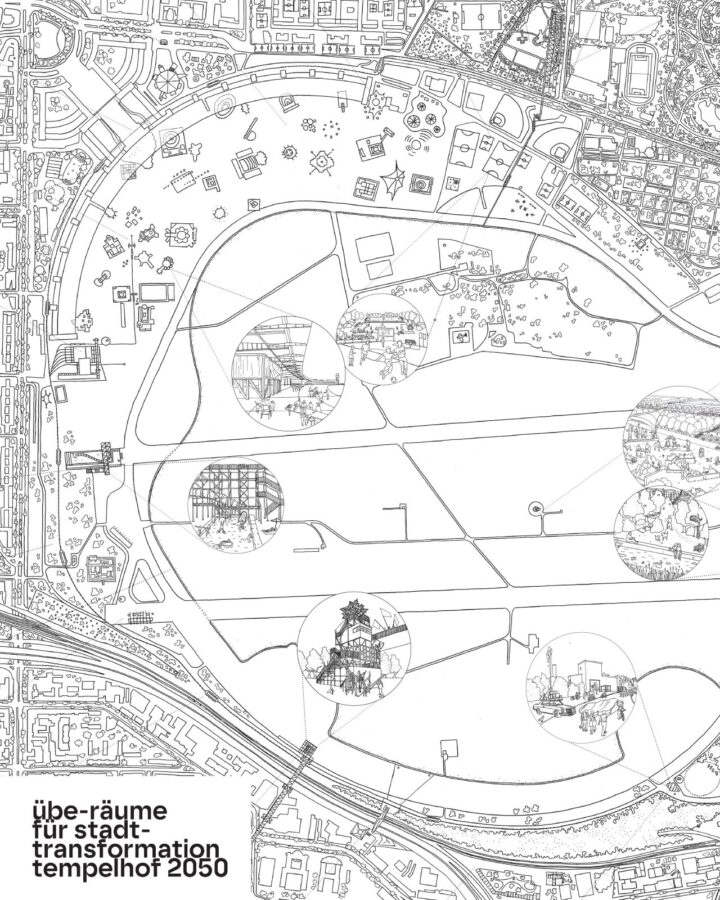
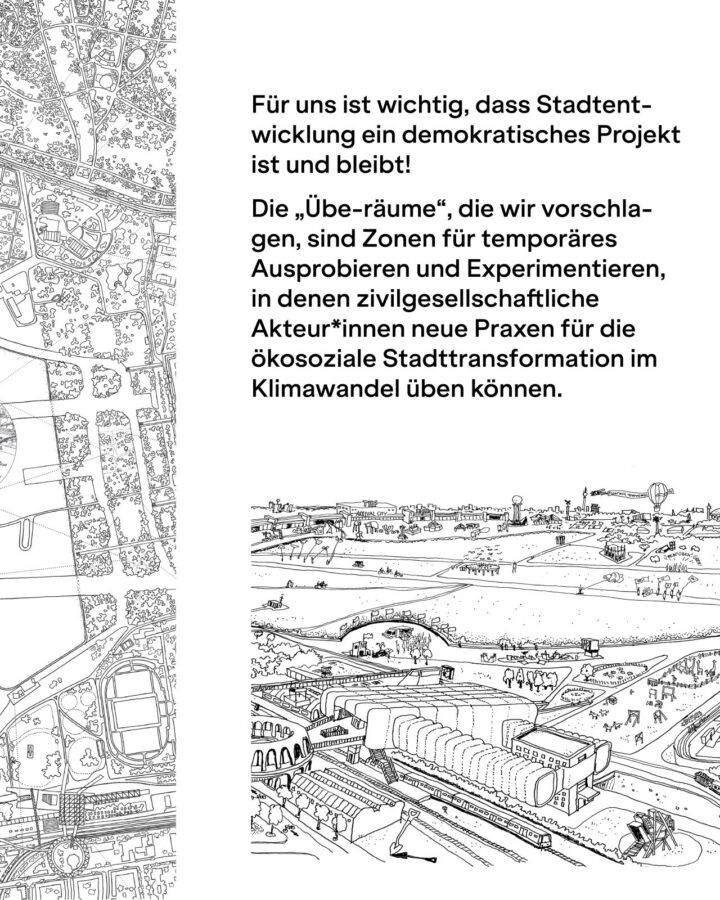
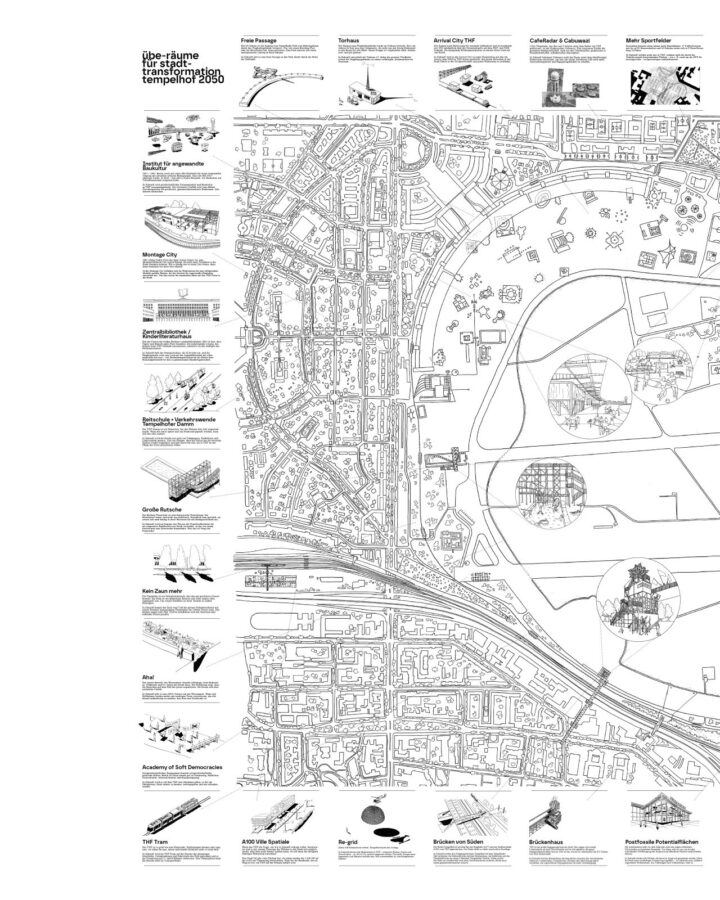
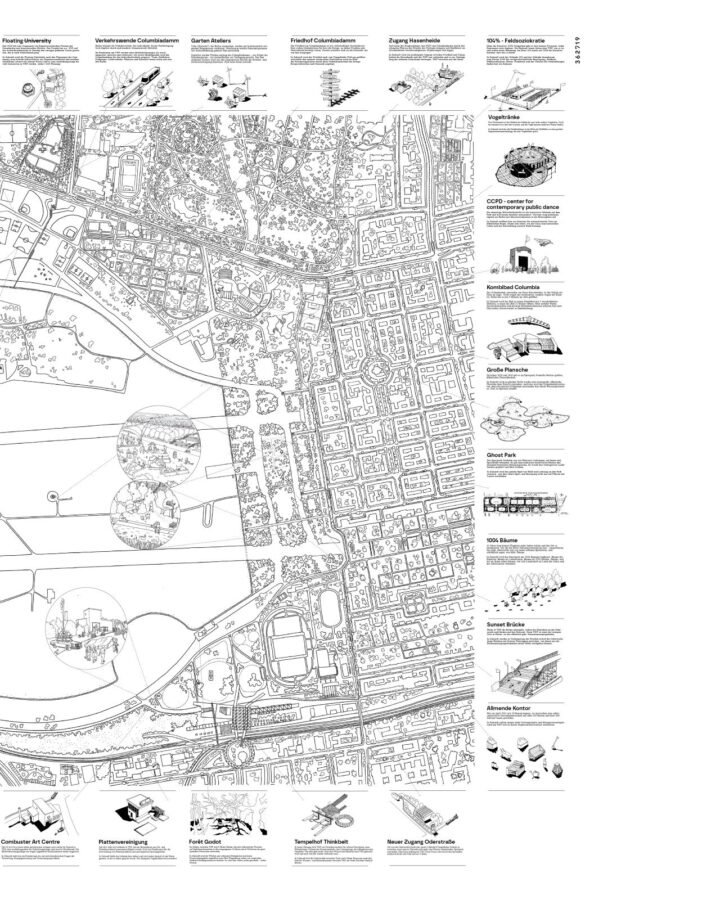
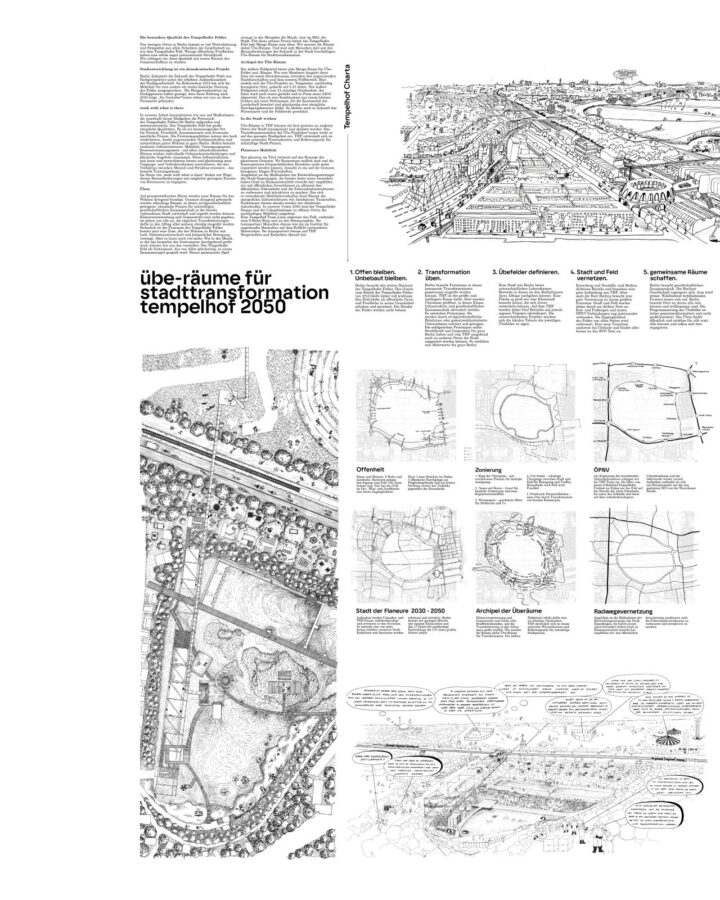
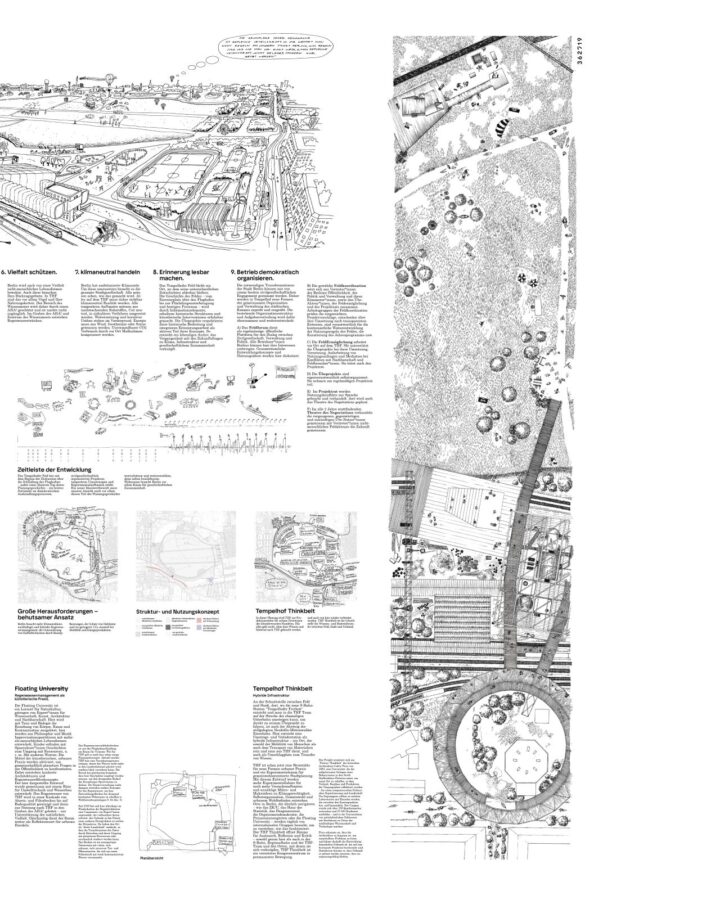
Ideenwettbewerb Tempelhof: How Not to Build
ein Preis für raumlabor gemeinsam mit urban catalyst und Christopher Dell
Ob Berlin einen Ideenwettbewerb für das Tempelhofer Feld brauchte ist strittig. Wir haben sicherheitshalber zusammen mit urban catalyst und Christopher Dell daran teilgenommen. Die Jury hat am Wochenende unsere Arbeit „übe-räume für stadttransformation – berlin 2050“ als eine von 4 Nicht-Bau-Entwürfen mit einem der sechs Preise ausgezeichnet. So far so yippieh!
Für uns ist wichtig, das Stadtentwicklung ein demokratisches Projekt ist und bleibt!
Das von den Berliner*innen mehrheitlich gewünschte Tempelhofgesetz von 2014 und die Ergebnissen der Bürgerwerkstätten 2024 stellen klar: Die Ideen, die jetzt gesucht werden, sind neben „how not to build“ vor allem – “welche zivilgesellschaftlichen und gemeinwohl-freundlichen Dynamiken können und sollen von den fantastischen Raumpotentialen des Tempelhofer Feldes profitieren?”.
Die „Übe-räume“ die wir vorschlagen, sind Zonen für temporäres Ausprobieren und Experimentieren, in denen zivilgesellschaftliche Akteur*innen neue Praxen für die öko-soziale Stadttransformation im Klimawandel üben können. Unsere langjährige Erfahrungen mit dem Tempelhofer Feld und seinen angrenzenden Quartieren, der Entwicklung der Pionierstrategie nach der Schließung des Flughafens, aber auch aus dem Aufbau des Urbane Praxis e.v., aus der Mitwirkung im Floating e.v. und in der Zusammenkunft Berlin e.g. wurden zur Blaupause für unseren nun prämierten Entwurf. Aus dieser Perspektive wurde klar: Für die Zukunft des Tempelhofer Felds, gibt es schon ganz viel, das es zu erhalten, stärken und weiterzudenken gilt: die 100% Tempelhof Aktiven, den Allemende Kontor Community Garten, das Torhaus, die Plattenvereinigung, Cabuwazi, Atelier Gardens und die Floating University. In unserem Entwurf schlagen wir noch viele andere wünschenswerte Neuerungen vor: mehr Trainingsstätten für soziales Miteinander, mehr Verbindungen für Radfahrer*innen, Fussgänger*innen und den Austausch von Ideen bis nach Brandenburg und zurück, eine Tramlinie rund ums Feld und andere Denkanlagen, wie die ZLB im THF Kleiderbügel und Experimentierflächen für Baukultur auf dessen Vorfeld, die A100 als 25Km innerstädtische Wohnbauentwicklungsfläche, mehr Wasser, mehr Bäume, mehr Gedenken, mehr Nebeneinander. Getragen von solchen Initiativen und Prozessen, eingebettet in einen gut überlegten Erhalt- und Pflegeplan, sind wir für Veränderungen.
Damit das Tempelhofer Feld als common ground weiter zur Entwicklung der Zukünfte aller Berliner*innen beiträgt.